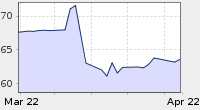
This chart tells an extraordinary story about the current state of the UK economy. On the one hand, we see household indebtedness, as a percentage of post tax income, rising rapidly. This growth in debt starts around 1998, and its growth almost exactly mirrors the housing bubble. However, interest payments, as a proportion of post tax income, have remained broadly constant.
So what has been going on with household balance sheets? As interest rates have fallen, people have more or less maintained the same level of interest payments, but taken on more debt. It is as if they have said to themselves "I can afford to pay around 8 percent of my post-tax income on interest charges and I will take on a level of debt consistent with that interest payment". So long as interest rates are falling, or remain low, this borrowing strategy did not posed any serious financing problems for households.
What did households do with all this extra debt? They used it for three things; some of it was used to buy overvalued houses; some of it was used for consumption collateralised on rising housing values (in other words mortgage equity withdrawal); and some of it was used to finance consumption through credit cards. For the UK economy as a whole, this borrowing binge sustained growth for the last nine years. However, inflation started to creep up, and interest rates are beginning to increase.
more ...











